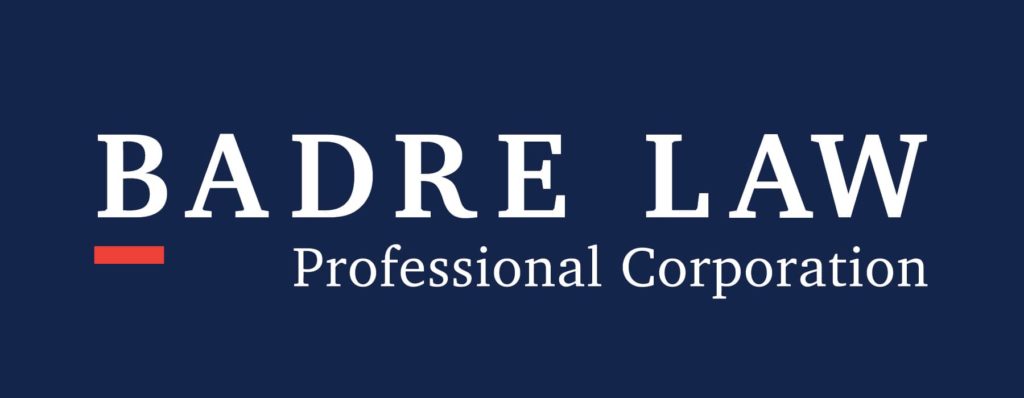Key Highlights of Ontario’s Minor Injury Guidelines (MIG)
- The Minor Injury Guidelines (MIG) are part of the Accident Benefits Schedule (ABS). It provides guidelines for how accident victims are covered for goods and services by their insurers if they sustain minor injuries in a motor vehicle accident.
- The MIG aims to provide speedy access to rehabilitation for those with minor injuries, improve the utilization of healthcare resources, and provide certainty around cost and payment for insurers and healthcare professionals.
- The MIG limits the amount victims can access to $2,200 or, with an extension, up to a maximum of $3,500. This amount may not cover the necessary treatment for many people.
- The MIG defines minor injuries as sprains, strains, whiplash-associated disorders, contusions, abrasions, lacerations, subluxations, and clinically associated sequelae.
- The MIG includes a treatment pathway of 12 weeks, divided into three blocks of four weeks each, and recommends additional treatments or therapeutic goods that can aid in recovery.
- Personal injury lawyers can help accident victims navigate the claims process under the MIG and argue for higher benefits if their injuries are more severe.
Introduction
Motor vehicle accidents can have a profound impact on an individual’s life, both physically and financially. Sustaining injuries in an accident can lead to medical expenses, rehabilitation costs, and loss of income, leaving accident victims struggling to recover and get back on their feet. In Ontario, the Minor Injury Guideline (MIG) is in place to provide guidance on how accident victims are covered for goods and services by their insurers if they sustain minor injuries in a motor vehicle accident.
The MIG is part of the Statutory Accident Benefits Schedule (SABS) and aims to provide speedy access to rehabilitation for those with minor injuries, improve the utilization of healthcare resources, and provide certainty around cost and payment for insurers and healthcare professionals. However, understanding the MIG and navigating the claims process can be complex and overwhelming for accident victims.
In this blog, we will simplify the minor injury guidelines for claims in Ontario. We will explain the purpose and scope of the MIG, how it affects accident victims, the categories of injuries covered under the MIG, the treatment pathway for minor injuries, and the challenges in classifying injuries and seeking compensation. We will also address frequently asked questions about the maximum coverage for minor injuries, reclassification of injuries, how to appeal misclassification and tips for documenting injuries and treatment for MIG claims. By providing this information, we hope to empower accident victims to understand their rights and make informed decisions about their claims.
Understanding the Minor Injury Guidelines (MIG) in Ontario
The Minor Injury Guideline (MIG) is an important aspect of the Statutory Accident Benefits Schedule (SABS) in Ontario. It provides guidelines for how accident victims are covered for goods and services by their insurers if they sustain minor injuries in a motor vehicle accident. The MIG is administered by the Financial Services Commission of Ontario (FSCO). It aims to provide speedy access to rehabilitation for those with minor injuries, improve the utilization of healthcare resources, and provide certainty around cost and payment for insurers and healthcare professionals.
The Purpose and Scope of MIG
The purpose of the MIG is to provide accident victims with speedy access to rehabilitation for minor injuries sustained in auto accidents. It also aims to improve the utilization of healthcare resources and provide certainty around cost and payment for insurers and regulated health professionals. By providing immediate access to treatment without requiring insurer approval, the MIG aims to ensure that accident victims with minor injuries receive the necessary care in a timely manner.
How MIG Affects Accident Victims
The MIG has a significant impact on accident victims, particularly those with minor injuries. Insurance companies can substantially reduce the amount of money they pay out for claims within the framework of the MIG. This can result in limited access to the necessary treatment and services for motor vehicle accident victims with minor injuries. While the MIG provides immediate access to treatment without insurer approval, the monetary limits may not be sufficient to cover all the expenses and rehabilitation services needed for a full recovery.
Categories of Injuries Under MIG
The MIG categorizes injuries into minor and non-minor. Minor injuries include sprains, strains, whiplash-associated disorders, contusions, abrasions, lacerations, subluxations, and clinically associated sequelae. These injuries are considered less severe and fall within the scope of the MIG. Non-minor injuries, on the other hand, may require additional treatment and do not fall under the MIG.
Defining Minor Injuries
Minor injuries, as defined by the MIG, include sprains, strains, whiplash-associated disorders, contusions, abrasions, lacerations, subluxations, and clinically associated sequelae. Sprains are injuries to ligaments, while strains refer to injuries to muscles or tendons. Whiplash-associated disorder is a neck injury commonly caused by motor vehicle accidents. Contusions and abrasions are bruises and scrapes, respectively. Lacerations are deep cuts, and subluxations occur when a joint begins to dislocate. Clinically associated sequelae refer to health complaints that arise as a result of the initial injury.
Exclusions from the Minor Injury Definition
While the MIG outlines the categories of injuries considered minor, there are exclusions from the definition. Injuries such as chronic pain and clinically associated sequelae that are not considered minor may fall outside the scope of the MIG. Similarly, injuries like concussions, which can have long-term effects, may also be excluded from the minor injury definition. These exclusions may require accident victims to seek additional medical and legal assistance to access the necessary treatment and benefits.

The Treatment Pathway for Minor Injuries
The MIG provides a treatment pathway for minor injuries, aiming to restore the injured person’s function and overall health. The treatment course outlined in the MIG spans 12 weeks, divided into three blocks of four weeks each. Health practitioners work with the injured person during each block, following the guidelines and overseeing all interventions. They may recommend supplementary treatment or therapeutic goods, such as ice packs or back supports, to aid in recovery. However, the costs of these additional treatments are included in the overall monetary limit set by the MIG.
Initial Assessment Protocols
As part of the treatment pathway for minor injuries, the MIG includes initial assessment protocols. These protocols involve a health practitioner, such as a medical professional or chiropractor, conducting an initial assessment of the injured person’s condition. The assessment helps determine the appropriate treatment plan and identifies any pre-existing conditions that may impact the treatment and benefits under the MIG.
Pre-approved Framework for Treatment
The MIG provides a pre-approved framework for the treatment of minor injuries. Under this framework, accident victims with minor injuries can access rehabilitation benefits and receive the necessary treatment without requiring insurer approval. The treatment plan is developed based on the initial assessment and aims to restore the injured person‘s function through a functional restoration approach. The treatment may include various rehabilitation services, such as physiotherapy or occupational therapy, depending on the specific needs of the injured person.
Navigating Claims for Minor Injuries
Navigating claims for minor injuries can be challenging, especially when dealing with insurance companies and the complex legal aspects of personal injury law. Many accident victims may benefit from the expertise of a personal injury lawyer who understands the intricacies of the insurance industry and the legal process involved in seeking compensation for minor injuries.
Documentation and Evidence Requirements
When filing a claim under the MIG, it is crucial to gather proper evidence and documentation to support the claim. This includes medical records, reports, and any other relevant documentation that demonstrates the severity and impact of the injuries. Providing compelling evidence is essential to establish the need for additional benefits and treatments beyond the limited coverage set by the MIG.
Steps to File a Claim under MIG
Filing a claim under the MIG involves several steps. The claimant must notify their insurer of the accident and provide the necessary documentation, including the Accident Benefits Application. It is essential to ensure all required information is accurately and thoroughly provided to avoid delays or complications in the claims process. Working with a personal injury lawyer can help streamline the claims process and ensure all necessary steps are followed.

Challenges in Classifying Injuries and Seeking Compensation
Classifying injuries and seeking compensation can be challenging, especially in cases where the severity of the injury is subjective or falls into gray areas. Insurance companies may misclassify injuries as minor to limit their payout, which can result in accident victims receiving inadequate treatment and compensation for their injuries.
Common Misclassifications and Their Impact
Accident victims may experience common misclassifications of their injuries, which can have a significant impact on the benefits and compensation they receive. Misclassifying a severe injury as minor can result in limited access to necessary treatment and inadequate compensation for ongoing pain and suffering. It is essential for accident victims to advocate for themselves and seek legal assistance if they believe their injuries have been misclassified.
Legal Recourse for Incorrect MIG Application
In cases where an injury is incorrectly classified under the MIG, accident victims may have legal recourse. Working with a personal injury lawyer who understands the legal aspects of the MIG and personal injury law can help accident victims navigate the legal process and seek the appropriate compensation and treatment for their injuries.
Conclusion
Understanding Minor Injury Guidelines (MIG) is crucial for accident victims in Ontario. By grasping the purpose, categories, and treatment pathways outlined in MIG, individuals can navigate claims effectively. Challenges in classification and seeking compensation require attention to documentation and legal recourse. If faced with misclassifications, understanding how to appeal is key. By staying informed and proactive, victims can ensure proper assessment and treatment for their injuries under MIG. For further guidance on MIG claims, feel free to get in touch for personalized assistance.
Frequently Asked Questions
What is the maximum coverage for minor injuries under MIG?
The maximum coverage for minor injuries under the MIG is $2,200, which can be extended to a maximum of $3,500 in certain cases. This coverage is provided by the insurer and falls within the guidelines set by the Financial Services Regulatory Authority of Ontario.
Can injuries be reclassified after initial assessment?
Injuries can be reclassified after the initial assessment if compelling evidence is provided to demonstrate that the injuries are beyond the scope of minor injuries as defined by the MIG. This may require additional medical documentation and expert opinions to support the reclassification.
How to appeal if your injury is wrongly classified under MIG?
If an injury is wrongly classified under the MIG, accident victims can appeal the decision. This typically involves seeking legal recourse and working with a personal injury lawyer who can present the necessary evidence and arguments to challenge the classification and seek the appropriate benefits and compensation.
Tips for documenting your injuries and treatment for MIG claims
When filing a claim under the MIG, it is essential to document injuries and treatment thoroughly. This includes keeping records of medical appointments, prescriptions, and any other relevant documentation. Proper documentation and evidence can strengthen the claim and increase the chances of receiving the necessary benefits and compensation.

